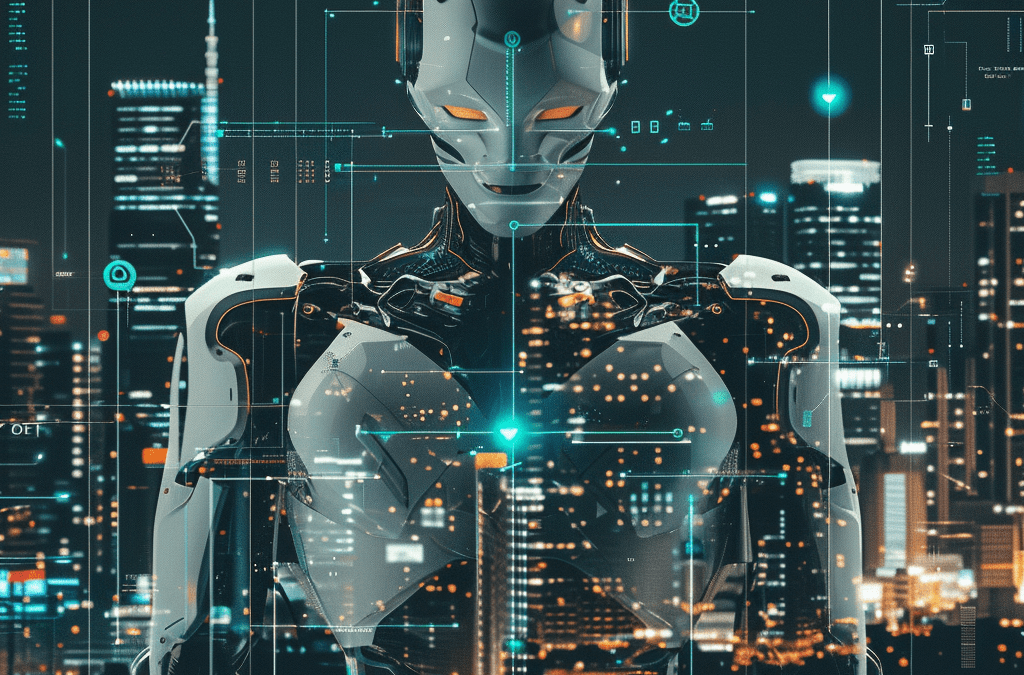Remember when deploying code meant crossing your fingers and hoping nothing broke in production? Those days of lengthy manual testing cycles, tedious documentation updates, and developers spending 40% of their time on repetitive tasks are rapidly becoming a thing of the past. Generative AI is fundamentally reshaping how we build, test, and deploy software — and forward-thinking CTOs are already seeing measurable impacts on their development velocity, code quality, and bottom line.
The numbers speak for themselves: organizations implementing AI-powered development tools report 30-50% faster development cycles, 25% reduction in bugs reaching production, and significant improvements in developer satisfaction. According to GitHub’s latest research, developers reported that GitHub Copilot helped them stay in the flow (73%) and preserve mental effort during repetitive tasks (87%). But beyond the metrics lies a more profound transformation — AI isn’t just making existing processes faster; it’s enabling entirely new approaches to software development that were previously impossible at scale.
- AI-Powered Code Generation: Beyond the Hype
- Intelligent Testing and Quality Assurance
- Automated Documentation and Knowledge Management
- Enhanced Code Review and Security
- DevOps and Deployment Optimization
- The Strategic Advantage: Building for Tomorrow
- Future Trends and Emerging Technologies
- Conclusion
AI-Powered Code Generation: Beyond the Hype
The most visible application of generative AI in software development is automated code generation, but the reality extends far beyond simple autocomplete. Today’s AI coding assistants are sophisticated partners that understand context, architectural patterns, and business logic.
GitHub Copilot and similar tools have evolved from novelty features to essential productivity multipliers. Developers report generating 40-60% of their code with AI assistance, and research published in Communications of the ACM shows consistent productivity gains across different development scenarios. The real value lies in how AI handles the cognitive load of boilerplate code, allowing engineers to focus on complex problem-solving and system design.
Consider a typical API development scenario: instead of manually writing CRUD operations, validation logic, and error handling for each endpoint, AI can generate complete, production-ready code based on a simple schema definition. This isn’t just faster — it’s more consistent and often includes edge cases that human developers might overlook.
Key applications include:
• Microservices scaffolding with complete testing frameworks
• Database migration scripts with rollback procedures
• API documentation that stays synchronized with code changes
• Infrastructure as Code templates for complex deployment scenarios
The ROI is immediate and measurable. Teams report reducing routine development tasks by 2-3 hours per developer per day, translating to significant cost savings and faster time-to-market for new features.
Intelligent Testing and Quality Assurance
Traditional testing approaches struggle with modern software complexity. Applications today integrate dozens of services, handle multiple data formats, and must perform across various devices and environments. Generative AI is revolutionizing QA by creating comprehensive test suites that human testers couldn’t practically develop.
According to Gartner’s Market Guide for AI-Augmented Software-Testing Tools, 80% of companies will have integrated AI-augmented testing tools into their software engineering processes by 2024, compared to only 15% in 2023. This represents a massive shift in how organizations approach quality assurance.
AI-powered testing tools can analyze your codebase and automatically generate:
• Unit tests with high coverage for complex business logic
• Integration tests that simulate realistic user workflows
• Edge case scenarios based on production data patterns
• Performance tests that identify bottlenecks before they impact users
One of our enterprise clients reduced their testing cycle from 3 weeks to 5 days by implementing AI-generated test automation. The AI system analyzed their production logs to identify the most critical user journeys, then created comprehensive test scenarios that caught 40% more bugs than their previous manual testing approach.
The real game-changer is adaptive testing — AI systems that learn from production incidents and automatically generate regression tests to prevent similar issues. This creates a self-improving quality assurance process that gets more effective over time.
Automated Documentation and Knowledge Management
Documentation debt is a silent killer of software projects. Outdated docs, missing API specifications, and poor knowledge transfer between teams create technical debt that compounds over time. Generative AI transforms documentation from a burden into an automatic byproduct of development.
Modern AI tools can analyze your codebase and generate:
• Comprehensive API documentation with examples and use cases
• Architecture diagrams that reflect current system design
• Code comments that explain complex business logic
• Onboarding guides for new team members
• Release notes that highlight user-facing changes
The key insight is that AI-generated documentation stays current because it’s integrated into the development workflow. When code changes, documentation updates automatically. This eliminates the common scenario where developers reference outdated documentation and make incorrect assumptions about system behavior.
Real-world impact: A fintech company we worked with reduced new developer onboarding time from 6 weeks to 2 weeks by implementing AI-generated documentation and interactive code exploration tools. New team members could understand complex financial algorithms through AI-generated explanations and examples, rather than deciphering cryptic comments or hunting down the original developers.
Enhanced Code Review and Security
Code reviews are essential for maintaining quality and security, but they’re often bottlenecks in fast-moving development teams. AI-powered code analysis provides immediate, comprehensive feedback that augments human expertise rather than replacing it.
AI code review tools excel at:
• Identifying security vulnerabilities including injection attacks, authentication flaws, and data exposure risks
• Detecting performance anti-patterns before they impact production
• Ensuring consistency with team coding standards and architectural patterns
• Suggesting optimizations based on latest language features and best practices
The sophistication of these tools is remarkable. They understand not just syntax but semantics — recognizing when a function performs correctly but inefficiently, or when error handling doesn’t align with the application’s broader patterns.
Security-focused AI tools are particularly valuable, as they can identify vulnerabilities that traditional static analysis tools miss. They understand context better than rule-based systems and can spot complex attack vectors that emerge from the interaction between multiple components.
DevOps and Deployment Optimization
The final frontier for AI in the SDLC is intelligent DevOps — systems that can predict, prevent, and resolve deployment issues before they impact users. AI-powered deployment pipelines are transforming how we think about continuous integration and delivery.
Advanced AI systems can:
• Predict deployment risks by analyzing code changes against historical incident data
• Automatically generate rollback strategies for complex multi-service deployments
• Optimize resource allocation based on predicted load patterns
• Detect anomalies in real-time and trigger automated responses
One particularly powerful application is predictive scaling — AI systems that analyze application usage patterns, upcoming business events, and seasonal trends to automatically provision infrastructure before demand spikes occur. This prevents both performance degradation and resource waste.
Monitoring and incident response have also been revolutionized. AI can correlate signals across multiple systems to identify root causes of issues within minutes rather than hours, and in many cases, automatically implement fixes based on similar previous incidents.
The Strategic Advantage: Building for Tomorrow
The organizations that embrace generative AI in their software development processes aren’t just working faster — they’re building fundamentally better software. AI enables a level of consistency, comprehensiveness, and optimization that human teams can’t achieve alone.
The compound benefits are significant:
• Faster feature delivery leads to better customer satisfaction and competitive advantage
• Higher code quality reduces technical debt and maintenance costs
• Improved developer experience helps attract and retain top talent
• Better security posture protects against increasingly sophisticated threats
According to Tricentis research, 80% of software teams will use AI next year. That’s a staggering adoption rate that hasn’t been seen since maybe the smartphone explosion.
The key to successful AI adoption is starting with pilot projects that demonstrate clear ROI, then scaling based on results. Focus on areas where AI can eliminate repetitive work or provide insights that would be impossible to generate manually.
Future Trends and Emerging Technologies
Looking ahead, several key trends are shaping the future of AI in software development:
Increased Automation: As regulatory frameworks evolve, we can expect a surge in the use of autonomous development tools and AI-driven deployment systems.
Integration with DevOps: Test automation trends for 2024 show that 51.8% of teams adopted DevOps practices by 2024, up from just 16.9% in 2022, indicating a massive shift toward integrated AI-powered development workflows.
AI-Native Development: New development methodologies are emerging that are built from the ground up to leverage AI capabilities, rather than retrofitting existing processes.
Enhanced Security: AI systems are becoming more sophisticated at identifying and preventing security vulnerabilities before they reach production.
Conclusion
As generative AI continues to evolve, the gap between AI-enhanced and traditional development teams will only widen. The question isn’t whether to adopt these technologies, but how quickly you can implement them effectively.
Ready to transform your development process with AI? Our team has helped dozens of organizations successfully integrate generative AI into their software development lifecycle. From strategy development to tool implementation and team training, we provide end-to-end support for your AI transformation journey.
Contact us today to schedule a consultation and discover how AI can accelerate your development velocity while improving quality and security.









